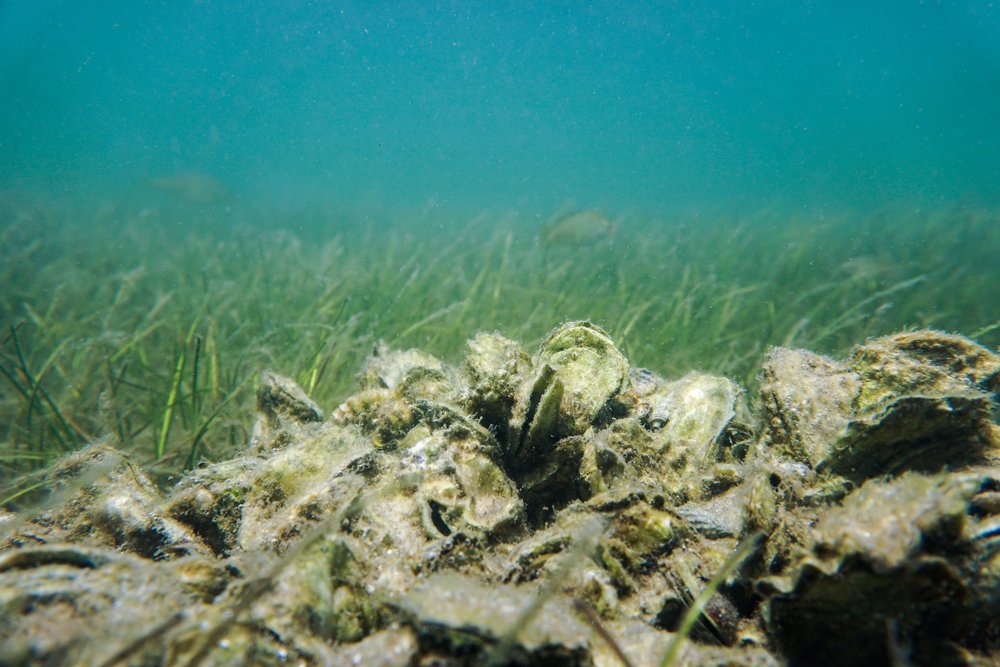At Oyster Heaven we have one goal: regenerating oyster reefs.
Our model allows us to do this independently and at scale because oyster reefs do really valuable jobs such as filtering water, managing nitrogen and improving biodiversity. We carefully monitor and measure these ecosystem services, also called “credits”, and use the profits to further regenerate oyster reefs.

Organisations that want to manage their environmental footprint can purchase these credits. This allows them to offset the last unmanageable percentage of their negative impact on the water or ecosystem.
However, we don’t sell credits to any organisation with an environmental footprint so they can continue with business as usual.
We work with businesses that we believe have a place in our sustainable future, for example those providing water, food and homes. At the same time, we don’t close our doors to any organisation automatically. Our experience shows us that there is often more to the story than meets the eye.
Some organisations have already taken significant steps towards sustainability, while others are still far behind. As a principled organisation, we are therefore faced with a choice.

Our vision is a society where we can continue living comfortably by helping our environment thrive. We believe that industries have to change and adapt to become more sustainable. However, we rely on industries to provide us with essential goods and services. Completely changing our society’s lifestyle in the short time we have is wishful thinking.
While working with sustainable organisations only might seem like the safe option, we realised we wouldn’t be doing nature any favour by ignoring the ones that are struggling to improve.
Here is why:
Automatically excluding struggling companies from our universe does not make them disappear. It just makes it harder for them, when they have an appetite to do things better, to find the partners that would be interested to work with them.
Instead, we could support them in taking the necessary steps towards reducing their environmental footprint. Regenerating oyster reefs should be seen as one of the many tools in the toolbox, and especially useful to manage the last (and often hardest) bit.

Sadly, sustainability has become a marketing theme that often leads to greenwashing.
Therefore, it is essential to us to step away from these types of practices and ensure that organisations purchasing credits are not doing so to enable polluting or to continue business as usual.
To achieve this, we have created a simple set of principles to determine what to do when struggling companies come across our path:
Oysters should only be used to manage unavoidable damage to the environment when all other options are financially impossible.
While we believe this is the way to move forward, we understand it’s a difficult topic and we are still learning how to best help the environment and support organisations to become more sustainable, staying away from the G-word. We would love to hear everyone’s comments and ideas to help us improve these criteria.